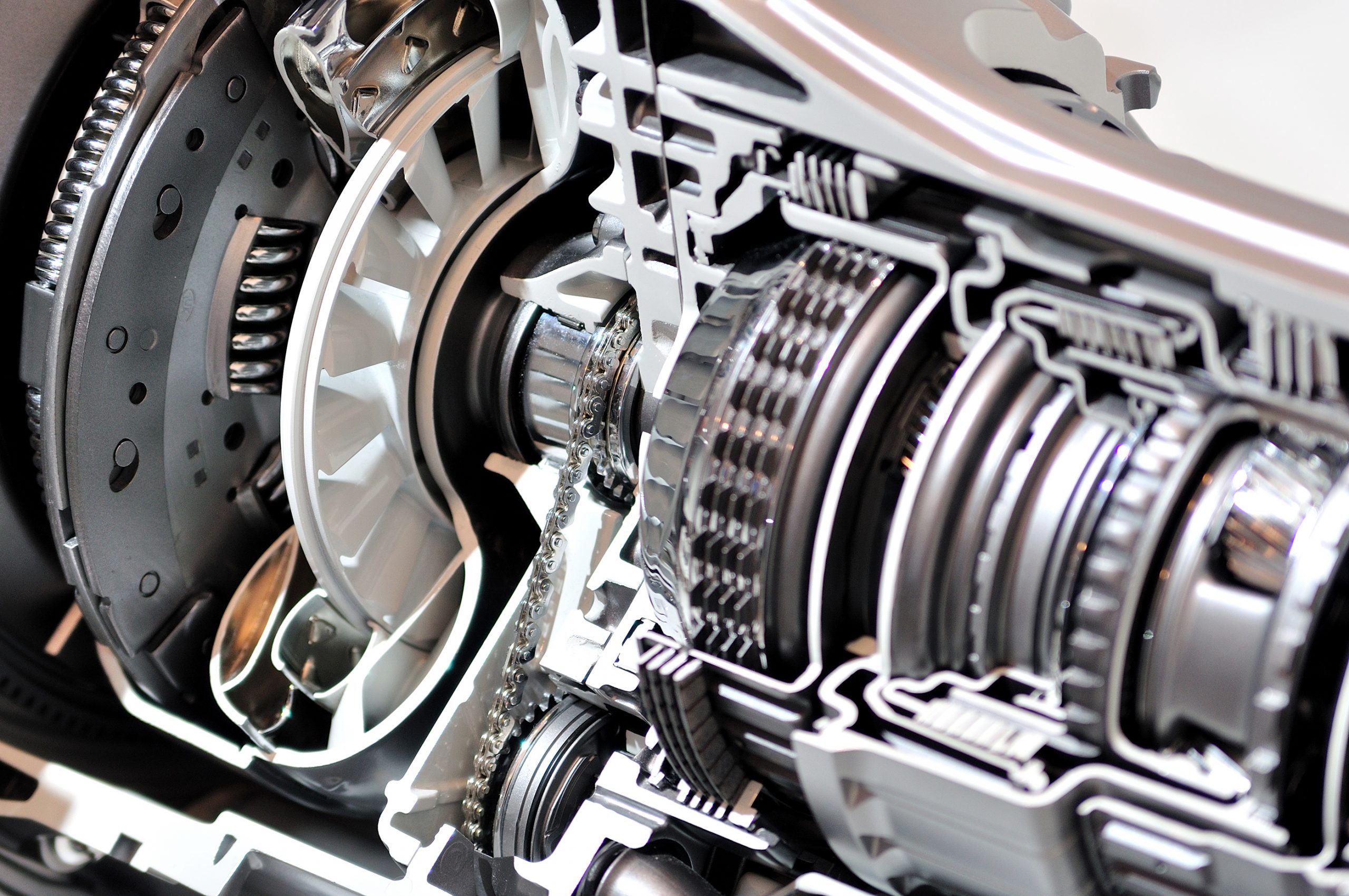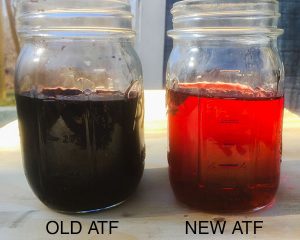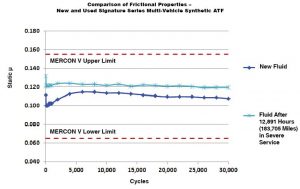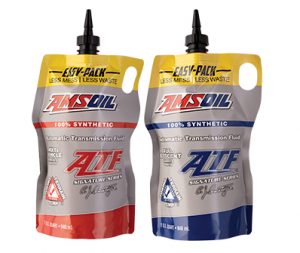Here are a few common reasons why your transmission may shift hard, jerk or hesitate.
• Low fluid level
• Depleted fluid frictional properties
• Poor cold-temperature fluidity
Start with the easiest fix
There’s an old adage when troubleshooting: start with the least expensive and simplest fix.
In this case, check the transmission fluid level first. Low fluid can lead to a transmission that shifts hard.
It’s important to find out why the fluid is low and fix any problems. It could be a leaky seal or other mechanical defect. Otherwise, adding new fluid won’t ultimately solve the problem.
Worn fluid can lead to hard shifts
Transmission fluid that has aged and lost some of its frictional properties can also lead to poor shift quality.
When your vehicle’s computer tells the transmission to shift gears, hydraulic pressure (provided by the fluid) squeezes a series of plates together inside a clutch pack to connect the engine to the transmission output shaft and route power to the wheels. The fluid’s frictional properties play a vital role in ensuring the clutch plates bind together properly and gear shifts occur seamlessly.
Over time, the fluid’s frictional properties can degrade, leading to hard, jerky or inconsistent shifts. In this case, it’s time for a fluid change.
How do you know for sure the fluid is worn?
The only definite way to find out is to conduct used fluid analysis. However, fluid that smells burnt or appears dirty is likely due for a change. You can opt for a transmission flush or pan drop.
It’s best practice to change the fluid before the frictional properties are depleted and you experience poor shifting.
Those poor shifts can cause the clutches to wear more rapidly and lead to bigger issues that need mechanical repairs.
Be aware of “adaptive” transmissions
One interesting note affects newer vehicles equipped with adaptive transmissions.
These units “learn” your driving habits and the characteristics of the fluid to adjust shifts accordingly. As the fluid loses its frictional properties, the computer compensates and adjusts transmission performance.
If you’ve recently changed your fluid, the computer may still operate as if old fluid is installed, causing poor shift quality. In these cases, keep driving and eventually the computer will “relearn” your driving habits and the behavior of the new fluid and adjust accordingly. The problem was significant enough on some 2012-2013 Ford F-150s to cause Ford to issue a technical service bulletin (TSB 13-1-10).
What do “frictional properties” look like?
We know what good, crisp shifts feel like. Can we dive in even further and see what they look like?
We can, and they appear as a flat, boring line on a graph.
The dark blue line represents the frictional properties of new AMSOIL Signature Series Synthetic Automatic Transmission Fluid. The light blue line shows the frictional properties of the same fluid after more than 180,000 miles in taxi cabs operating in the intense heat of Las Vegas.
As you can see, the lines are extremely close, with no abrupt spikes or dips. This means, after 180,000 miles of severe service, the fluid continued to deliver crisp, confident shifts.
Granted, it’s not exciting to look at – unless you love driving and want to protect your transmission.
Cold weather can lead to a transmission that shifts hard
When the temperature drops, transmission fluids with poor cold-flow properties can thicken and cause elongated and hard shifts until the fluid has warmed up enough to flow properly.
Switching to a high-quality synthetic transmission fluid will help.
Synthetics don’t contain waxes, as conventional fluids do, meaning they remain fluid at lower temperatures for improved shifts during cold weather.
The best transmission fluid available won’t fix a broken transmission. But using high-quality synthetic fluid can help improve shift quality and maximize transmission life.
Originally published June 5, 2017.








Thank You for the good info and proving Amsoil is the best.
Thank you for sharing this info! I found that the easiest way to test your transmission fluid to see if it needs changing is to take the dipstick and wipe it on a towel. If the fluid is a dark red or rusty brown, it’s time to change!
As many years as I have in the performance automotive and performance diesel business one glaring point isn’t made here…that point being once you allow fluid in an automatic to become low enough or dirty enough (pump starvation via dirty filter) it’s pretty much game over. It may work for a while after it top it up (if it’s low you have a problem anyway) or after you change it and the filter (again if it’s burnt or full of little black flakes enough to cause a performance issue) it’s toast! Automatic transmissions are among the most unforgiving pieces of automotive technology.
Don’t ever think because it’s working ok again after you service or top it up that you have a reliable vehicle again…unfortunately you are on a timer now and how long it will last is a total guess!
Proper and timely proactive maintenance, proper fluid for application, and COOLING are the keys to transmission longevity…not reactive maintenance.
Hi Brad,
Thanks for the advice. We agree with you – taking care of your transmission proactively beats fixing it after it starts shifting hard or fails altogether. We wrote about the importance of transmission maintenance in this post.
Starting with the least expensive fixes first is always best practice. You have no idea how many times I’ve wasted my own money when starting with something I “thought” was the problem then it ended up being something much cheaper.. Always start with the least expensive likely problems then move up from there.
I’m glad you mentioned that low fluid level could be the reason why your transmission may be shifting erratically, or hesitate. My husband’s truck is having a lot of transmission issues, and we don’t know what could be wrong. We will have to check the fluids and see if that is the problem.
I didn’t know that transmission fluid could lead to poor shift quality as it ages. My husband has had his car for a few years and is noticing that there may be an issue with his transmission. I think he is going to need to get this checked out. Hopefully, we can find a place near us that can help him out.
I couldn’t agree more. A lot of factor affects the smoother shifting of the transmission including poor quality and quantity of the transmission fluid. Transmission fluid acts as lubricant for different components of the transmission and reduces friction among adjacent components of the transmission to ensure smoother performance. However, degraded or lower quantity of transmission fluid could affects the performance of the transmission. So, regular inspection of transmission fluid is really essential to evaluate the condition of such fluids and in time is an important aspect of basic car maintenance.
I am also car owner and thanks for sharing I will share on my walls for my customers
Thank you so much for talking about how important transmission fluid changes are and how to tell if a replacement is needed. Just the other day, my brother was sending me messages about some car trouble that he wasn’t so sure why it was happening. With how he described it as a hard time shifting gears and parking, it makes me believe there’s something wrong with his transmission, so I’ll definitely help him get the fluid checked and do any necessary replacements.
I mechanic and I love your wrinting style
Hi my name is gabriel i have an 04 lincoln navigator v8 5.7 that when i shift it to drive its makes a loud pop sound what wrong when it does that notice its only on the drive gear
Hi Gabriel,
Unfortunately, I can’t diagnose a problem like that over the Internet. Your best bet is to visit a trusted mechanic.
Good luck,
John
Why won’t my transmission go all the way in? I had to replace the clutch fork and pivot ball now the transmission will NOT go back in, it will go in but all but a inch???! Can anyone give me any tips on what to do??
By the way it’s a 2002 v6 t5 5 speed.
Hi Shawn,
I’m sorry to hear about your problems with your transmission. It sounds like a mechanical issue, not a problem with the fluid, so I can’t help you, unfortunately. You probably need to see a mechanic.
Good luck,
John
What causes a downshift in my Ford Fiesta 2012?
Hi Maria,
It’s impossible to diagnose such a vague problem via the Internet. It could be multiple issues…or even nothing at all. I recommend you visit a trusted mechanic or the Ford dealership for diagnosis.
Thanks,
John